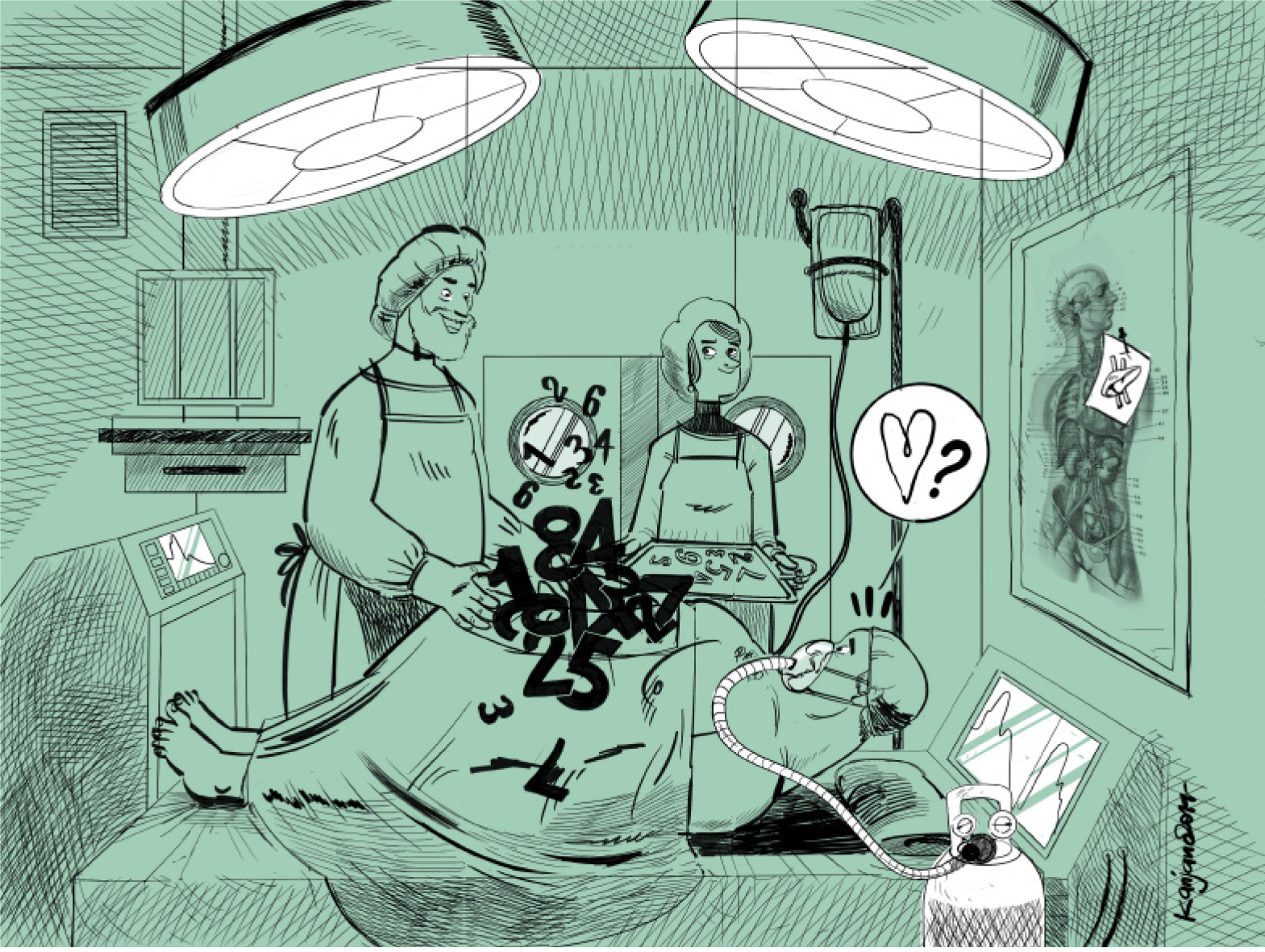Copyright
©The Author(s) 2020.
World J Gastrointest Pathophysiol. May 12, 2020; 11(3): 57-63
Published online May 12, 2020. doi: 10.4291/wjgp.v11.i3.57
Published online May 12, 2020. doi: 10.4291/wjgp.v11.i3.57
Figure 1 The naive and surreal “vision” of the artist displays in this drawing a tale of bodies and shadows.
The researchers are exploring directly the liver of an obese patient, while the shadows of atherosclerosis and of arterial stiffness, i.e., numbers, amazingly leak out from the liver and graphs of non-invasive measurements appear at the operating table’s headboard. The theory that fatty liver in itself may hurt the vessels, as in the drawing of the anatomical drawing behind, lacks currently consistent supporting statistics. In these topics it is always unsafe to treat simultaneity as causation. The use of straightforward diagnostic methods for non-alcoholic fatty liver disease (surgical liver biopsy) and indirect measurements of aortic stiffness, pulse wave velocity, fails to demonstrate a direct independent relationship between the two conditions. The conjectural hypothesis of labeling non-alcoholic fatty liver disease as a novel risk factor for atherosclerosis, defined by the proxy of arterial stiffness, is far away to be demonstrated (drawing by Giuliano Cangiano-Kanjano).
- Citation: Trovato GM. Non-alcoholic fatty liver disease and Atherosclerosis at a crossroad: The overlap of a theory of change and bioinformatics. World J Gastrointest Pathophysiol 2020; 11(3): 57-63
- URL: https://www.wjgnet.com/2150-5330/full/v11/i3/57.htm
- DOI: https://dx.doi.org/10.4291/wjgp.v11.i3.57









